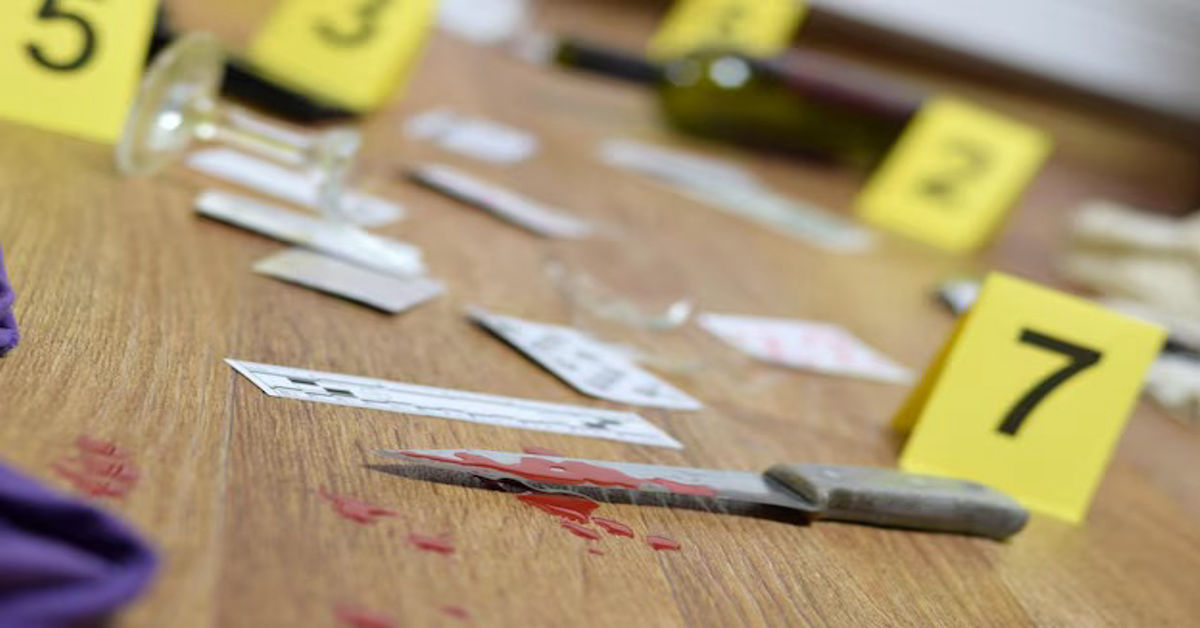The story of Gypsy Rose Blanchard remains one of the most chilling and complex criminal cases in recent American history. It combines disturbing elements of abuse, deception and ultimate tragedy. The release of crime scene photos from the Blanchard home has once again brought the case into public attention. These photos are considered graphic and unsettling, reflecting the violence that occurred on that June night in 2015. Beyond the gruesome details, the images tell a larger story about control, manipulation and a desperate attempt for freedom. This article explores the background of the case, the significance of the crime scene photos, the trial that followed, and Gypsy Rose’s transformation from a victim of abuse to an unlikely public figure. Readers will gain insight into how these events unfolded and why the case continues to fascinate audiences worldwide.
Early Life of Gypsy Rose Blanchard
Gypsy Rose was born in 1991 in Louisiana. From her earliest years, her mother Clauddine “Dee Dee” Blanchard claimed that Gypsy suffered from numerous illnesses, including leukemia, muscular dystrophy, and seizures. Dee Dee convinced medical professionals, neighbors, and charitable organizations that her daughter was chronically ill and disabled. Gypsy was often confined to a wheelchair, given unnecessary medication, and subjected to countless medical procedures.
In reality, many of these conditions were fabricated. Experts later concluded that Dee Dee was exhibiting behaviors consistent with Munchausen syndrome by proxy, a psychological disorder where a caregiver fabricates or induces illness in another person for attention or sympathy. This false narrative shaped Gypsy’s entire childhood. While she appeared to be a cheerful and fragile girl in the public eye, she was trapped in a life of manipulation and fear at home.
The Relationship Between Gypsy and Dee Dee
The relationship between Gypsy and her mother was both intimate and deeply controlling. Dee Dee presented herself as a devoted caregiver, yet behind closed doors she restricted Gypsy’s independence. Gypsy was told she was younger than her actual age, isolated from her peers, and discouraged from questioning authority. When Gypsy attempted to assert herself, Dee Dee reportedly threatened her or used force to maintain control.
As Gypsy grew older, she began to realize that she was not as sick as her mother claimed. She discovered that she could walk without assistance and that many of the medications she took were unnecessary. This revelation created deep conflict. On one hand, she loved and relied on her mother. On the other, she longed for freedom and a life outside of Dee Dee’s shadow. This tension set the stage for the tragic events that would unfold in 2015.
Discovery of Online Connections
The internet became a secret escape for Gypsy. Through online communities, she found connections that offered friendship, understanding, and romance. One of those connections was with Nicholas Godejohn, a man she met on a Christian dating website. Their relationship quickly turned into an intense bond. Gypsy confided in Nicholas about her mother’s abuse and her desire to live independently.
Nicholas, who also struggled with personal challenges and mental health issues, became emotionally invested in Gypsy’s situation. Over time, their conversations turned toward darker possibilities. They began discussing how Gypsy might finally escape her mother’s control. While Gypsy dreamed of a normal life, Nicholas suggested a more extreme solution. These secret plans marked a turning point, as they crossed from fantasies of escape into the planning of a violent crime.
The Murder of Dee Dee Blanchard
On June 14, 2015, Dee Dee Blanchard was found dead in her home in Missouri. She had been stabbed multiple times while asleep in her bed. Investigators later learned that Nicholas Godejohn carried out the stabbing, but Gypsy was actively involved in planning the act. She provided access to the home, supplied a knife, and encouraged Nicholas to follow through.
The crime shocked neighbors and the community. Many people initially believed Gypsy had also been harmed, since she was missing when the body was discovered. Only later did police locate Gypsy and Nicholas in Wisconsin, where they had fled after the killing. The discovery of Gypsy alive and physically healthy stunned the public, as it contradicted the long-held image of a fragile, sickly child. This marked the beginning of one of the most sensational trials in recent years.
The Role of Crime Scene Photos
The crime scene photos from the Blanchard home provide disturbing evidence of the violence that occurred. They document the bedroom where Dee Dee was killed, the bloodstained bedding, and the aftermath of the stabbing. Law enforcement officials described the photos as among the most unsettling images they had encountered.
These photos became central in understanding the brutality of the act and the environment in which it happened. For legal professionals, the images confirmed the premeditated nature of the crime Gypsy Rose Crime Scene Photos. For the public, they revealed the grim reality behind sensational headlines. While disturbing, the photos serve as an important reminder of how desperation and long-term abuse can culminate in tragedy. They also highlight the fine line between victimhood and culpability, as Gypsy was both an abused daughter and a participant in her mother’s murder.
Timeline of Key Events
| Year | Event | Significance |
| 1991 | Birth of Gypsy Rose Blanchard | Beginning of a life shaped by fabricated illnesses |
| Early 2000s | Dee Dee begins claiming Gypsy suffers from severe conditions | Establishes long-term deception |
| 2012 | Gypsy meets Nicholas Godejohn online | Start of relationship leading to crime |
| June 14, 2015 | Murder of Dee Dee Blanchard | Turning point of the case |
| 2016 | Gypsy sentenced to prison | Public begins reevaluating her role |
| 2023 | Gypsy released on parole | Emerges as influencer and public figure |
The Arrest and Legal Proceedings
Following the murder, police quickly identified Gypsy and Nicholas as suspects. Their online conversations, text messages, and travel records provided strong evidence of premeditation. Both were arrested in Wisconsin within days of the crime. The revelation that Gypsy could walk and had been largely healthy shocked the public.
Gypsy eventually accepted a plea deal. In 2016, she was sentenced to 10 years in prison for second-degree murder. Nicholas, who carried out the stabbing, received a life sentence without parole. The court acknowledged the years of abuse Gypsy endured but emphasized that murder could not be justified as the only solution. The trial raised complex questions about accountability, victimization, and how the legal system addresses cases involving long-term psychological abuse.
Public Reaction to the Case
The Gypsy Rose case captured widespread media attention. Documentaries, dramatized series, and news coverage turned the story into a national conversation. Some viewed Gypsy as a cold-blooded conspirator who manipulated her boyfriend into killing her mother. Others saw her as a desperate victim who believed murder was her only way out.
The crime scene photos intensified these debates. They underscored the brutality of the crime but also reminded people of the years of suffering Gypsy endured. As the case was retold through various media, public opinion shifted. More people came to see Gypsy as a survivor of extreme abuse rather than a simple criminal. This evolving perception would shape her life after prison and her rise as a public figure.
Comparison of Perspectives on the Case
| Perspective | View of Gypsy | View of Dee Dee | Overall Judgment |
| Legal System | Responsible participant in murder | Victim of crime | Balanced accountability |
| Public Supporters | Abused victim with limited choices | Abuser who caused tragedy | Sympathy toward Gypsy |
| Critics | Manipulator who involved her boyfriend | Devoted mother with flaws | Focus on Gypsy’s culpability |
| Media Narratives | Complex mix of victim and criminal | Overbearing and controlling figure | Story of abuse and desperation |
Gypsy Rose in Prison
During her prison sentence, Gypsy reflected on her actions and the circumstances that led to them. Interviews with journalists revealed her acknowledgment of wrongdoing while also expressing relief at being free from her mother’s control. She began corresponding with supporters and even formed new relationships while incarcerated.
In prison, Gypsy appeared to gain a sense of independence that she had never experienced before. For the first time, she was making her own decisions, even within the limitations of incarceration. Her case continued to attract attention, and she became the subject of documentaries and dramatized portrayals. This sustained public interest created a foundation for her future influence once she was released.
Life After Release
In December 2023, Gypsy Rose Blanchard was released on parole after serving seven years of her sentence. Her reentry into public life was marked by widespread media coverage and social media attention. She quickly gained a large online following, with many people fascinated by her story of survival, crime, and redemption.
Gypsy began using her platform to speak about her experiences, particularly the abuse she endured under her mother. She also emphasized the importance of recognizing signs of Munchausen syndrome by proxy and providing resources for victims of similar Gypsy Rose Crime Scene Photos. Her transformation from a victim and convicted criminal to a public advocate demonstrated how narratives can evolve over time. This shift also illustrated society’s interest in stories of resilience and second chances.
Transformation of Gypsy Rose
| Stage of Life | Public Image | Key Characteristics | Outcome |
| Childhood | Sick and fragile child | Controlled by fabricated illnesses | Public sympathy |
| Crime and Trial | Co-conspirator in murder | Participant in violent act | Mixed reactions |
| Prison Years | Reflective and rehabilitating | Developing independence | Growing support |
| Post-Release | Influencer and advocate | Public figure using her story | Broad recognition |
Ethical Questions Raised
The case raises significant ethical and societal questions. How should the justice system handle individuals who are both victims and perpetrators? To what extent does long-term abuse excuse extreme actions? And how should society balance empathy with accountability?
The crime scene photos intensify these debates by providing undeniable evidence of violence. They force observers to confront the harsh reality of the crime while also considering the years of manipulation that preceded it Gypsy Rose Crime Scene Photos. For many, the case underscores the importance of mental health awareness, better oversight in healthcare, and stronger support systems for vulnerable individuals. It also challenges the public to consider how narratives of crime and punishment are shaped by media portrayals.
Conclusion
The story of Gypsy Rose Blanchard is both tragic and compelling. The crime scene photos from her mother’s home remain a haunting reminder of the violent act that ended one life and forever changed another. Yet beyond the graphic imagery lies a deeper narrative of abuse, survival, and transformation. Gypsy’s journey from a manipulated child to a convicted criminal and ultimately to an advocate illustrates the complexity of human experience.
As society reflects on this case, it serves as a reminder of the need for vigilance against abuse and compassion for survivors. It also highlights the responsibility of legal and medical institutions to protect vulnerable individuals. The legacy of this story, reinforced by the crime scene photos, will continue to provoke debate about Gypsy Rose Crime Scene Photos justice, morality, and resilience for years to come.
Frequently Asked Questions
What are Gypsy Rose Crime Scene Photos?
They are graphic images taken by investigators after the murder of Dee Dee Blanchard, documenting the aftermath of the crime.
Why are the photos significant?
They provide evidence of the violence and serve as crucial material in understanding the nature of the crime.
Is Gypsy Rose still in prison?
No. She was released on parole in 2023 after serving seven years of a 10-year sentence.
What happened to Nicholas Godejohn?
He remains in prison, serving a life sentence without the possibility of parole.
Why does the case continue to attract attention?
It involves themes of abuse, manipulation, justice, and redemption, making it both shocking and deeply human.







